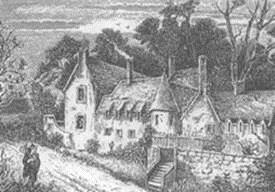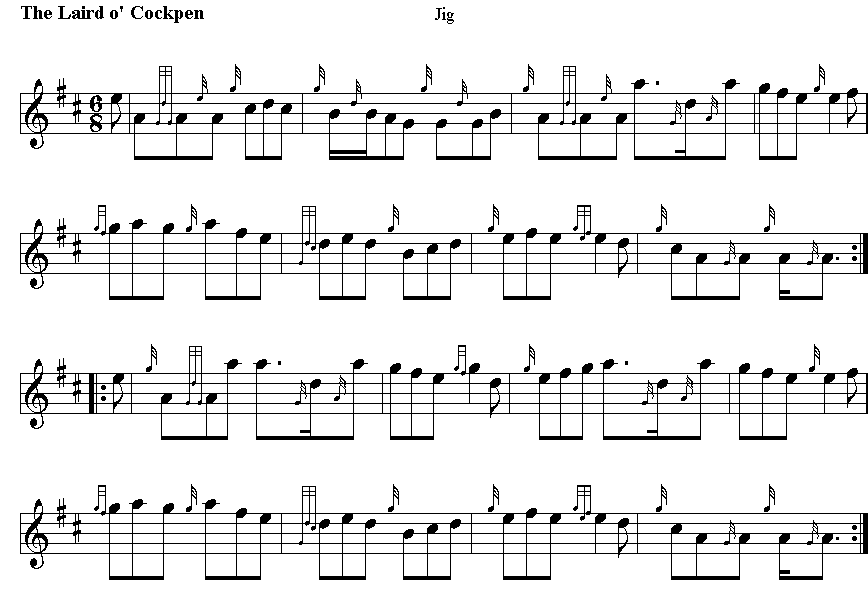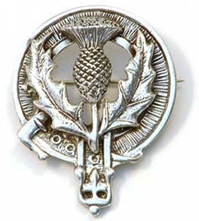|
The
Laird o' Cockpen is
a song by Scottish songwriter Carolina Nairne, Baroness Nairne
(17661845), which she contributed anonymously to The
Scottish Minstrel, a six-volume collection of traditional
Scottish songs published from 1821 to 1824.
Carolina
Oliphant was born at the Auld Hoose, Gask, Perthshire on 16
August 1766, the fourth child of the three sons and four
daughters of Laurence Oliphant (17241792), laird of Gask, and
his wife Margaret Robertson (17391774); the Auld Hoose was her
father's ancestral family home. Margaret was the eldest daughter
of Duncan Robertson of Struan, the chief of Clan Donnachie,
which fought on the Jacobite side in the uprisings of 1715 and
'45. Carolina's father Laurence was also a staunch Jacobite,
thus she was given the name Carolina in memory of Prince Charles
Edward Stuart.

Following
the failure of the Jacobite rising of 1745 the Oliphant family
along with the Robertsons and the Nairnes were accused of high
treason, exiled to France, and their estates seized. They
remained in France for nineteen years, during which time
Carolina's parents were married at Versailles, in 1755. The
government eventually allowed Laurence's kinsmen to buy back
part of the Gask estate, and the couple returned to Scotland two
years before Carolina's birth. Both of her parents, who were
cousins, were grandchildren of Lord Nairne, who had commanded
the second line of the Jacobite army at the Battle of
Prestonpans in 1745 and subsequently been sentenced to death the
following year.
The upbringing of Laurence's
children reflected his Jacobite allegiance and their everyday
lives were filled with reminders that he considered the Stewarts
the rightful heirs to the throne. A governess was employed to
ensure the girls did not speak with a broad Scottish dialect as
their father did not consider it ladylike; general tuition was
provided by a local minister the children's prayer books had
the Hanoverian sovereign's names obscured by those of the
Stewarts and music and dance teachers were also engaged.
Delicate as a child, Carolina gradually developed into a genteel
young woman, much admired by fashionable families; she was well
educated, able to paint and an accomplished musician familiar
with traditional songs.
As a teenager, Carolina was
betrothed to William Murray Nairne, another of Lord Nairne's
grandchildren, and who became the 5th Lord Nairne in 1824. Born
in Ireland to a Jacobite family from Perthshire whose lands had
also been forfeited, he regularly visited Gask. It was only
after he was promoted to the position of assistant
inspector-general at a Scottish barracks that the pair were able
to be married on 2 June 1806. The couple settled in Edinburgh,
where their only son, also named William Murray Nairne
(18081837), was born two years later. He was a sickly child
and, following her husband's death in 1830, Lady Nairne lived
with her son in Ireland and on the continent. The change in
climate was not as beneficial to his health as hoped; he died in
Brussels in December 1837. She returned to Gask in 1843, but
following a stroke her health deteriorated; she died on 26
October 1845 and was buried in the family chapel.
Carolina
began writing songs shortly after her father's death in 1792.
She was a contemporary of the best-known Scottish songwriter and
poet Robert Burns. Although the two never met, together they
forged a national song for Scotland, that in the words of Dianne
Dugaw, Professor of English and Folklore at the University of
Oregon, "lies somewhere between folk-song and art-song." For
both, Jacobite history was a powerful influence. Carolina could
read music and played the harpsichord, which allowed her to
contribute some of her own tunes. Three tunes almost certainly
written by Carolina are those to "Will "Ye No Come Back Again",
"The Rowan Tree", and "The Auld House", as no earlier printed
versions have been found.
What was
probably her first composition The Pleughman
(ploughman) may have been a tribute to Burns. Just like him,
Carolina's songs were at first circulated by being performed,
but her interest in Scottish music and song brought her into
contact with Robert Purdie, an Edinburgh publisher. Purdie was
gathering together "a collection of the national airs, with
words suited for refined circles" to which Carolina contributed
a significant number of original songs, all without attribution
to her. The collection was published in six volumes as The
Scottish Minstrel from 1821 to 1824, with music edited by
Robert Archibald Smith.
The bulk
of Carolina's more than 80 songs have Jacobitism as their
backdrop, perhaps unsurprising given her family background and
upbringing. Examples of the best known of such works include "Wha'll
be King but Charlie?" "Charlie is my darling", "The Hundred
Pipers", "He's owre the Hills", and "Will ye no' come back
again?". In part she wrote such songs as a tribute to the
mid-18th century struggles of her parents and grandparents, but
the Jacobite influence in her work runs deep. In "The Laird o'
Cockpen", for instance, Carolina echoes the Jacobite distaste
for the Whiggish displays and manners of the noveau riche in
post-Union Scotland, as does "Caller Herrin'".
Most of
Carolina's songs were written before her marriage in 1806. She
completed her last "Would Ye Be Young Again?" at the age of
75, adding a note in the manuscript that perhaps reveals much of
her attitude to life: "The thirst of the dying wretch in the
desert is nothing to the pining for voices which have ceased
forever!" Indeed Carolina's songs often focus on grief, on what
can be no more, and romanticize a traditional way of Scottish
life. Her contemporary Burns, on the other hand, had an eye on a
global future "a brotherhood of working people 'the warld
o'er' that's 'comin yet'".
Perhaps in
the belief that her work would not be taken seriously if it were
known that she was a woman, Carolina went to considerable
lengths to conceal her identity when submitting work for
publication, even from her husband. Early on she called herself
Mrs. Bogan of Bogan, but feeling that gave too much away she
often attributed her songs to the gender-neutral B.B., S.M., or
Unknown.
The Laird
o' Cockpen was a real historical figure, with an estate in
Cockpen. Cockpen is a parish in Midlothian, Scotland, containing
at its north-west corner the town of Bonnyrigg - Cockpen
is agreed to be a Cumbric name cognate with Welsh coch
'red' + pen 'peak'. Having fought on the Royalist side
at the Battle of Worcester in 1651, the final battle of the
English Civil War, he accompanied King Charles II to Holland
after the defeat by Parliamentary forces. He became one of the
King's favorites, but following the restoration of the monarchy
in 1660, Cockpen discovered that his estate had been
confiscated, and that an ungrateful King refused to answer his
petitions for its return. But by a strategy he succeeded in
re-establishing his familiarity with King, who restored him to
his lands.
Carolina probably wrote "The
Laird o' Cockpen" as a young woman, still living in her
birthplace, the Auld Hoose in Gask, Perthshire. The song as
written by Carolina is in seven stanzas, set to the tune of "O
when she cam' ben she bobbit".

Lyrics
The laird o' Cockpen, he's proud an' he's great,
His mind is ta'en up wi' the things o' the State;
He wanted a wife, his braw house to keep,
But favour wi' wooin' was fashious to seek.
Down by the dyke-side a lady did dwell,
At his table head he thocht she'd look well,
MLeish's ae dochter o' Clavers-ha' Lea,
A penniless lass wi' a lang pedigree.
His wig was weel pouther'd and as gude as new,
His waistcoat was white, his coat it was blue;
He put on a ring, a sword, and cock'd hat,
And wha could refuse the laird wi' a' that?
He took the grey mare, and rade cannily,
And rapp'd at the yett o' Clavers-ha' Lea;
Gae tell Mistress Jean to come speedily ben, -
She's wanted to speak to the laird o' Cockpen.
Mistress Jean she was makin' the elderflower wine;
An' what brings the laird at sic a like time?
She put aff her apron, and on her silk goun,
Her mutch wi' red ribbons, and gaed awa' doun.
An' when she cam' ben, he bowed fu' low,
An' what was his errand he soon let her know;
Amazed was the laird when the lady said Na,
And wi' a laigh curtsie she turned awa'.
Dumfounder'd was he, nae sigh did he gie,
He mounted his mare - he rade cannily;
An' aften he thought, as he gaed through the glen,
She's daft to refuse the laird o' Cockpen.
|



